Table of Contents
Did you know how long does Sencha tea last depends almost entirely on how you store it? While properly stored, unopened Japanese green tea can stay fresh for up to one year in the fridge from its packaging date, once opened, that peak freshness window shrinks dramatically to just 3-6 months.
Surprisingly, this timeframe varies by tea type. A standard Matcha has an even shorter lifespan than Sencha, typically remaining at its best for only 6-8 months after packing. Japanese tea storage is particularly critical because light and UV rays accelerate the degradation process, directly impacting both flavor and color. In fact, the golden rule for any tea enthusiast is remembering that proper storage must be dark, dry, and airtight.
We’ve been studying and enjoying Japanese teas for years, and we’ve learned that knowing how to store Sencha tea properly can make the difference between a delightful, aromatic cup and a stale, flavorless disappointment. In this guide, we’ll share our expert tips to extend your Sencha’s shelf life and keep it tasting its absolute best.
Why Sencha Tea Loses Freshness Quickly
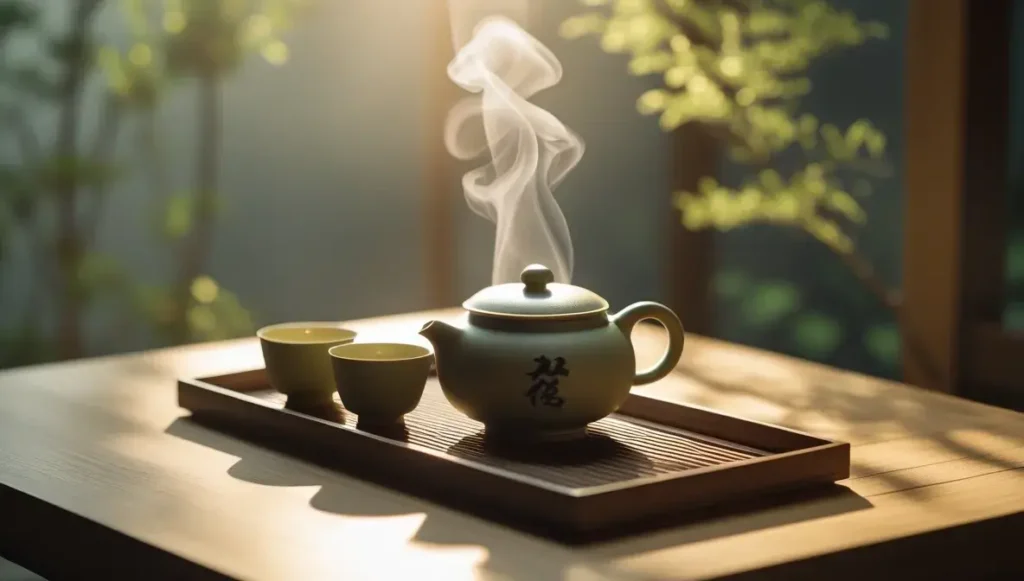
“”Drink your tea slowly and reverently, as if it is the axis on which the world earth revolves—slowly, evenly, without rushing toward the future.”” — Thich Nhat Hanh, Renowned Zen Master, peace activist, and author
Sencha tea begins losing its distinctive flavor immediately after opening the package. Unlike other beverages that gradually decline in quality, this Japanese green tea experiences a dramatic freshness drop within days. Understanding why this happens helps in developing better storage strategies.
The delicate nature of Japanese green tea
Japanese green teas like Sencha are fundamentally different from Chinese varieties due to their processing method. Instead of pan-roasting, Japanese teas undergo steaming for 40-80 seconds immediately after harvesting to halt oxidation. This steaming preserves the natural vegetable flavors and vibrant green color but creates a more delicate product. Moreover, the steaming process maintains higher levels of catechins and other compounds that are especially vulnerable to environmental factors.
How oxidation and light affect flavor
Oxidation occurs when tea leaves interact with oxygen, transforming their chemical composition. For Sencha, this process begins the moment you open the package. During oxidation, the catechins (which contribute to Sencha’s beneficial properties) start breaking down into theaflavins and thearubigins. Additionally, chlorophyll breaks down when exposed to heat, light, and air, causing the distinctive green color to fade toward brown.
Light exposure is particularly damaging to Sencha tea. The UV rays accelerate the degradation of both color and flavor compounds. Essentially, sunlight alters the leaf color and produces unwanted aromas. Even brief exposure to direct sunlight can initiate these negative changes.
Why Sencha is more sensitive than other teas
Sencha’s heightened sensitivity comes from its minimal oxidation during processing. Since oxidized teas have already undergone these chemical changes in a controlled manner, they remain stable longer. Furthermore, Sencha contains higher levels of catechins than shade-grown varieties like Gyokuro or Matcha. These catechins react readily with oxygen, making unshaded teas particularly vulnerable.
Many tea enthusiasts report that Sencha can lose 30% of its flavor within just one day of opening, even when stored in sealed containers. This sensitivity exceeds that of most other tea types, making proper storage absolutely critical. Consequently, Sencha demands more attentive handling than roasted teas, with many experts recommending consuming it within 2-3 months after opening.
👉 Unlock the Best Sencha Tea Experience with Every Sip 👈
5 Common Mistakes That Shorten Sencha’s Shelf Life
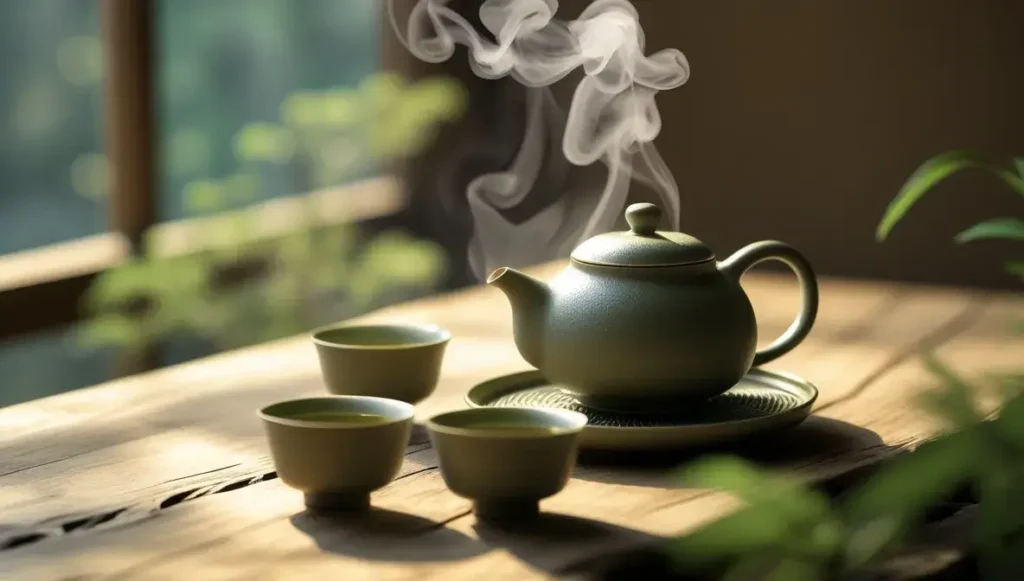
Even with high-quality Sencha tea, certain storage practices can significantly reduce its shelf life. Throughout my years working with Japanese teas, I’ve identified several common errors that tea enthusiasts unknowingly make.
Storing in clear or loose containers
Using transparent glass jars or loosely sealed containers exposes Sencha to its greatest enemies: light and air. Exposure to UV rays breaks down the chlorophyll and catechins that give Sencha its vibrant color and health benefits. Likewise, oxygen accelerates oxidation, rapidly degrading flavor compounds. Always opt for opaque, airtight containers made of ceramic, tin, or aluminum foil pouches with one-way valves to maintain freshness.
Exposing tea to kitchen odors
Sencha leaves easily absorb surrounding aromas. Placing tea near spices, coffee beans, or strong-smelling foods contaminates its delicate flavor profile. The porous nature of tea leaves makes them excellent odor absorbers—hence their secondary use as deodorizers. Store your Japanese tea storage containers away from cooking areas and aromatic ingredients to preserve their authentic taste.
Frequent temperature changes
Moving Sencha between warm and cool environments creates condensation inside containers. This moisture introduction promotes mold growth and accelerates degradation. Although refrigeration can extend shelf life, constant removal and return to the refrigerator creates harmful temperature fluctuations. Choose one consistent storage location—either at room temperature in a cool, dark place or permanently in cold storage.
Keeping opened tea in the fridge
Contrary to popular belief, refrigerating opened Sencha can sometimes do more harm than good. Unless the tea is completely protected from moisture and odors, refrigeration may introduce unwanted humidity and food smells. If you must refrigerate, double-seal the tea in airtight containers and allow it to reach room temperature before opening to prevent condensation on the leaves.
Buying more than you can consume
Purchasing bulk quantities seems economical but often results in stale tea. Fresh Sencha maintains optimal flavor for only 1-2 months after opening. Therefore, buying smaller amounts more frequently ensures you’re always drinking Sencha at its peak quality. Consider how much tea you realistically consume weekly and purchase accordingly.
How to Store Sencha Tea the Right Way
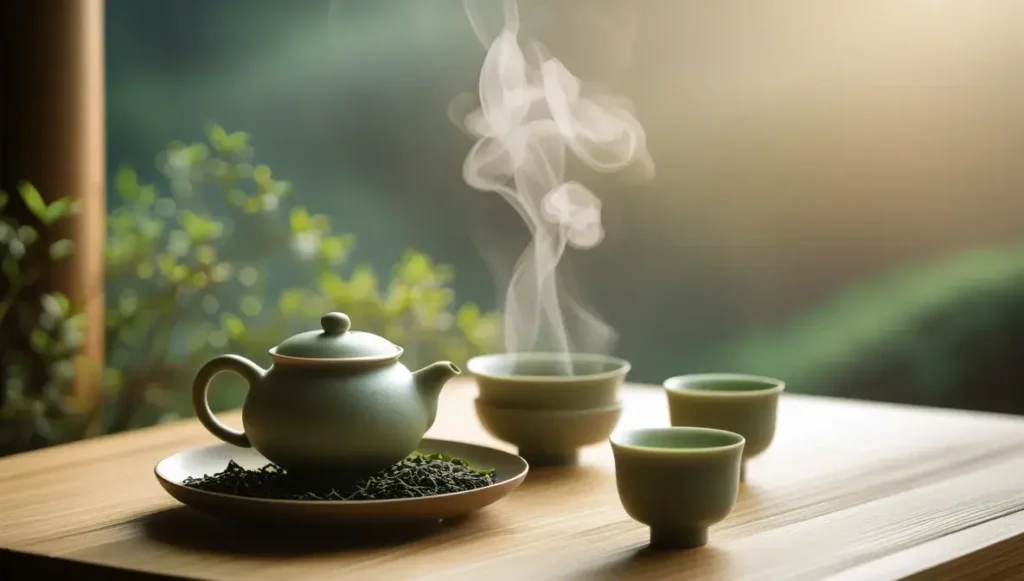
“”Tea is the elixir of life.”” — Eisai, Japanese Buddhist priest, founder of the Rinzai school of Zen Buddhism, introduced tea to Japan
Proper Japanese tea storage directly determines how long Sencha tea lasts. For this reason, investing in appropriate containers and storage techniques pays off with consistently fresh, flavorful cups. Here’s how to keep your Sencha at its best:
Best containers for Japanese tea storage
The ideal Sencha container is airtight, opaque, and odor-free. Chazutsu (茶筒), traditional Japanese tea canisters, offer excellent protection with their double-lid design. These canisters are typically made from:
- Stainless steel or aluminum (odor-free and blocks light completely)
- Tin-plated material (provides excellent seal)
- Wood from cherry blossom trees (offers natural antimicrobial properties)
Most importantly, choose containers just large enough for your tea quantity to minimize air exposure.
Where to keep unopened vs opened tea
Unopened Sencha packages should be stored in the refrigerator where they’ll stay fresh for up to one year from the packaging date. Once opened, however, keep your tea in a cool, dark place away from the kitchen—ideally in a cupboard with consistent temperature below 70°F.
Should you refrigerate Sencha?
The refrigerator debate among tea experts continues, nevertheless, most agree on these principles:
- Refrigerate only unopened packages
- Before opening refrigerated tea, let it sit at room temperature for 1-2 hours to prevent condensation
- Opened tea generally stays fresher outside the refrigerator in proper containers
How to store Sencha for daily use
For convenience, transfer a 10-day supply (approximately 60g for two daily drinkers) to a dedicated chazutsu or airtight canister. Keep this away from sunlight and strong odors. Label containers with purchase dates and aim to consume within three months of opening for optimal flavor.
Tips for storing Sencha teabags
Sencha teabags follow the same principles as loose leaf. First and foremost, keep them in airtight, opaque containers. In addition to protecting from light and air, ensure they’re away from moisture sources. Despite their packaging, teabags remain vulnerable to odor absorption, so store them separately from spices, coffee, or aromatic foods.
👉 Grab Top‑Quality Sencha Tea for a Refreshing Ritual 👈
What to Do When Sencha Gets Old
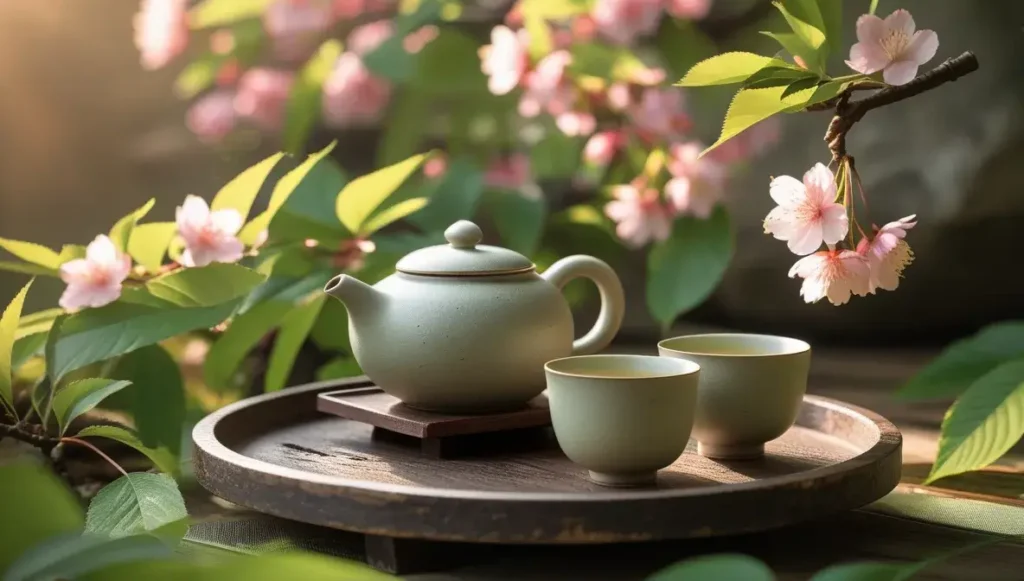
Don’t discard that aging Sencha just yet! Even past-prime tea leaves can find new life through several creative approaches that preserve both value and utility.
How to tell if Sencha has gone stale
Identifying stale Sencha involves checking these key indicators:
- Aroma loss: Fresh Sencha has a vibrant, grassy scent that fades as it ages
- Color shift: The leaves turn from vibrant green to dull brownish
- Flavor change: Stale tea develops haylike, woody notes rather than fresh vegetable qualities
- Appearance: Leaves become more brittle and may appear lifeless
Once opened, Sencha typically maintains optimal flavor for only 1-2 months, yet remains safe to consume long afterward unless mold appears.
Can you eat Sencha leaves?
Surprisingly, Sencha leaves are completely edible and nutritionally valuable. After brewing, approximately 70% of nutrients remain in the leaves, including water-insoluble components like vitamin E and dietary fiber. This makes eating used tea leaves an excellent way to absorb all functional ingredients.
High-quality Sencha works best for eating. Simply mix steeped leaves with ponzu sauce or soy sauce for a quick side dish. The recommended consumption amount is about one tablespoon (5-6 grams) daily.
Turning old Sencha into Houjicha
Roasting stale Sencha transforms it into aromatic Houjicha with sweet, nutty flavors. Try these methods:
Stovetop method: Spread leaves on a clean, dry frying pan (no oil). Roast over low heat, stirring constantly until leaves turn brown and emit a roasted aroma.
Microwave method: Heat leaves for 45 seconds 2-3 times, stirring between intervals.
Oven method: Spread leaves on a foil-lined tray, bake at 300°F (150°C), stirring every 3 minutes until fragrant.
Using aged tea for cooking or deodorizing
Beyond brewing, old Sencha can:
- Add flavor to soups, salads, and rice dishes
- Create tea-infused oils or marinades
- Enrich compost with nitrogen
- Absorb refrigerator odors (dried leaves work best)
- Serve as natural fertilizer for plants
These applications ensure nothing goes to waste, extending your tea’s usefulness well beyond its prime drinking days.
Final Thoughts on How Long Does Sencha Tea Last
Proper storage determines everything about your Sencha tea experience. Throughout this guide, we’ve seen how this delicate Japanese green tea requires specific care to maintain its vibrant flavor, color, and health benefits. Undoubtedly, the dark-dry-airtight rule remains essential for preserving Sencha’s distinctive qualities.
Remember that even premium Sencha begins losing quality immediately after opening. Therefore, purchasing smaller quantities more frequently makes better sense than buying in bulk. Additionally, investing in proper storage containers like traditional chazutsu pays dividends through consistently fresh cups.
Despite your best efforts, Sencha eventually ages beyond its prime drinking window. Nevertheless, this doesn’t mean wasting your tea. Old Sencha transforms beautifully into houjicha through simple roasting, adds flavor to various dishes, or serves practical purposes around your home.
Above all, understanding Sencha’s sensitivity helps you appreciate why proper storage matters so much. By following these expert storage tips, you’ll extend your tea’s shelf life significantly and enjoy every cup at its flavorful best. After all, few things compare to the pleasure of properly stored, fresh Sencha – a testament to Japanese tea tradition that rewards those who treat it with care.
👉 Indulge in Premium Japanese Sencha Tea for Daily Vitality 👈
Key Takeaways
Understanding proper Sencha storage can dramatically extend your tea’s freshness and preserve its delicate flavor profile. Here are the essential insights every tea enthusiast should know:
- Sencha loses 30% of its flavor within one day of opening – consume within 3-6 months after opening for optimal taste
- Store in opaque, airtight containers away from light and odors – traditional chazutsu or tin canisters work best
- Refrigerate only unopened packages – opened tea stays fresher at room temperature in proper containers
- Buy smaller quantities more frequently rather than bulk purchasing to ensure peak freshness
- Transform stale Sencha into aromatic Houjicha by roasting leaves in a pan until brown and fragrant
The key to enjoying exceptional Sencha lies in treating it with the same care Japanese tea masters have practiced for centuries – protecting it from light, air, moisture, and temperature fluctuations while consuming it within its optimal freshness window.
FAQs
Q1. How long can I store opened Sencha tea? Once opened, Sencha tea is best consumed within 3-6 months for optimal flavor. However, proper storage in an airtight, opaque container away from light and odors can help maintain its quality during this period.
Q2. What’s the best way to store Sencha tea? Store Sencha in airtight, opaque containers like traditional chazutsu or tin canisters. Keep it in a cool, dark place away from the kitchen, ideally in a cupboard with a consistent temperature below 70°F. Only refrigerate unopened packages.
Q3. Does Sencha tea expire? While Sencha tea doesn’t technically expire, it loses freshness and flavor over time. Unopened packages can last up to a year when refrigerated, but once opened, the tea’s quality begins to decline. It’s best to consume it within a few months of opening for the best taste experience.
Q4. Can I still use Sencha tea that’s past its prime? Yes, you can repurpose older Sencha tea. Try roasting it to create Houjicha, a tea with a nutty flavor profile. You can also use it in cooking, as a natural fertilizer for plants, or as a deodorizer for your refrigerator.
Q5. Is Sencha tea healthier than other green teas? Sencha is rich in catechin antioxidants due to its sun exposure during growth. While all green teas offer health benefits, Sencha’s unique processing method helps retain high levels of beneficial compounds. However, the healthiest tea is one that you enjoy and consume regularly as part of a balanced diet.
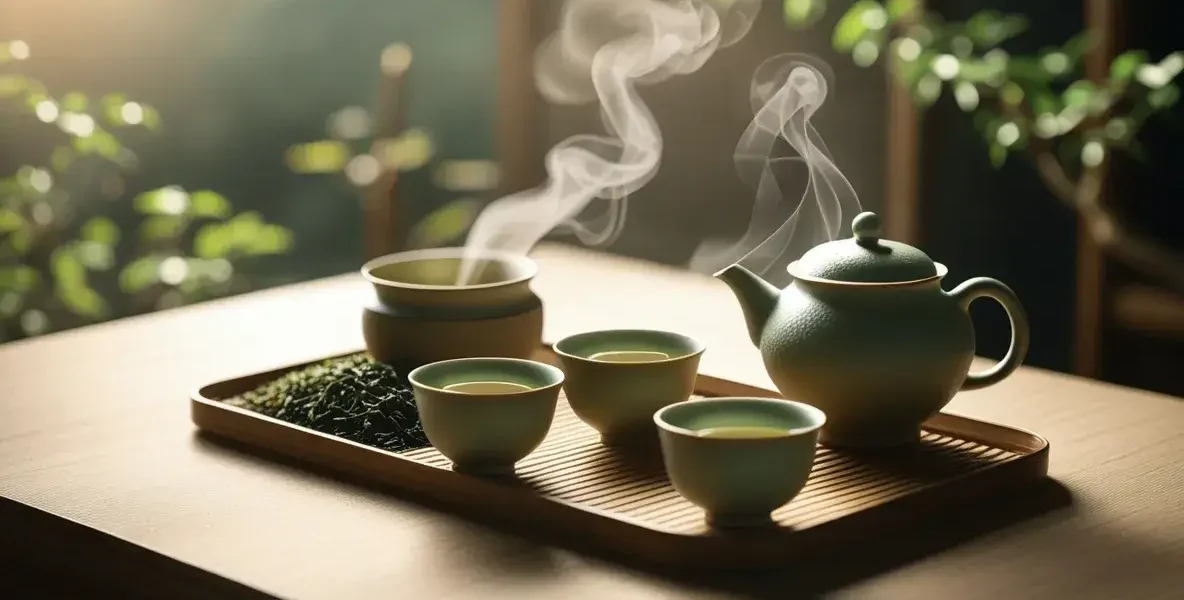

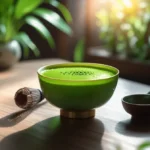
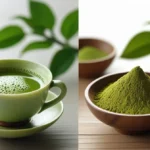

![Jasmine Tea vs Green Tea Benefits: Which Gives Better Health Results? [2025] jasmine tea vs green tea benefits](https://www.goteaworld.com/wp-content/uploads/2025/09/jasmine-tea-vs-green-tea-benefits-150x150.webp)
![Pu Erh Tea vs Green Tea: Which is Better for Daily Health? [2025] pu erh tea vs green tea](https://www.goteaworld.com/wp-content/uploads/2025/10/pu-erh-tea-vs-green-tea-150x150.webp)






